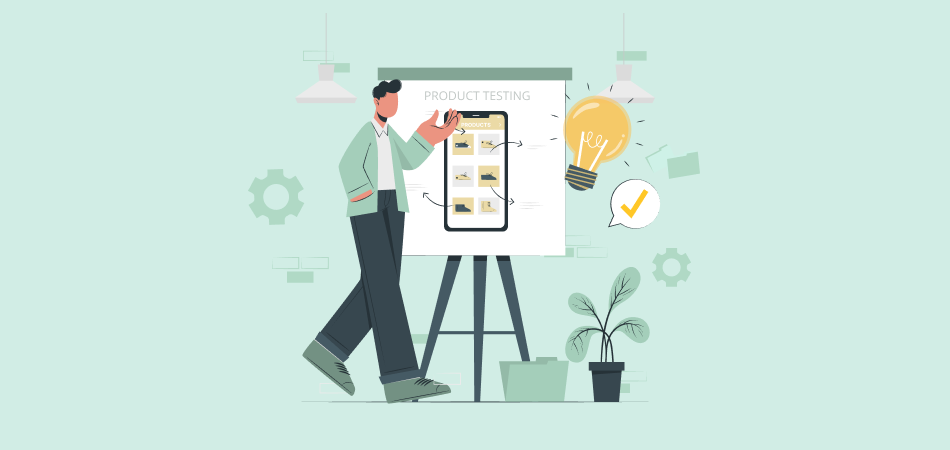Product Testing: A Complete Guide to Product Testing

Product testing is a critical step in the product development process that helps ensure a product meets the required quality standards, performs as intended, and satisfies customer needs. It involves a series of assessments and evaluations to determine whether a product is ready for market launch or if further improvements are necessary. Effective product testing not only identifies potential issues before a product reaches customers but also provides valuable insights into how a product can be optimized for better performance and user satisfaction.
Why Product Testing Matters
Product testing is vital for several reasons, including quality assurance, safety compliance, risk mitigation, customer satisfaction, market competitiveness, cost efficiency, and brand reputation.
- Quality Assurance: Product testing helps identify any defects or inconsistencies, allowing manufacturers to make necessary improvements before the product reaches consumers.
- Safety Compliance: Safety is a top priority for any product, especially those that could pose risks to users. Product testing helps ensure that products comply with safety regulations and standards.
- Risk Mitigation: By identifying potential issues early in the product development process, companies can mitigate risks associated with product failures.
- Customer Satisfaction: Meeting customer expectations is key to the success of any product. Through product testing, companies can ensure that their products perform as promised and meet customer needs.
- Market Competitiveness: Product testing allows companies to benchmark their products against competitors and make improvements to gain a competitive edge.
- Cost Efficiency: Detecting and resolving issues during the testing phase is far more cost-effective than addressing them after the product has been launched.
- Brand Reputation: A strong brand reputation is built on the consistent delivery of high-quality products. Product testing ensures that the products launched into the market are reliable and meet consumer needs.
When to Test a Product
Product testing is a continuous process that should occur at different stages of product development. Each phase offers unique insights and opportunities to refine the product before it reaches the consumer. Here’s when to test a product:
Prototyping Phase
During the prototyping phase, testing is essential to evaluate the basic functionality and design of the product. At this stage, the focus is on identifying and correcting any major flaws in the concept.
This phase allows for iterative improvements, where prototypes are modified based on testing results until the product meets the desired specifications. Early testing during this phase can prevent costly changes later in the development process.
Pre-Launch Phase
The pre-launch phase is critical for comprehensive product testing. At this stage, the product is close to its final version, and testing is conducted to ensure that it meets all regulatory requirements, quality standards, and customer expectations.
This phase often includes stress testing, safety checks, and usability assessments. Pre-launch testing helps identify any last-minute issues and ensures that the product is ready for market release without significant risks.
Post-Launch Monitoring
Even after launching the product, testing doesn’t stop. Post-launch monitoring involves gathering feedback from real customers and conducting ongoing quality checks.
This phase helps identify any issues that may not have been evident during pre-launch testing. Continuous testing and monitoring allow for product improvements, updates, and fixes based on actual user experience. It also helps in maintaining customer satisfaction and addressing any potential recalls or revisions.
How to Test a Product
Testing products involves various methods to ensure quality, performance, and user satisfaction. Here are some effective ways to approach product testing:
Customer Surveys and Feedback
Surveys provide structured feedback from users, offering insights into their satisfaction, experiences, and any issues they encounter. Analyzing survey data can highlight common concerns and areas for improvement.
Feedback forms allow users to offer detailed comments and suggestions. This qualitative feedback complements survey results and can uncover specific issues and potential enhancements.

Usability Testing
User trials involve observing real users interacting with the product in a controlled environment. This observation helps identify usability issues and assesses the product’s ease of use.
Task analysis evaluates how users complete specific tasks with the product. This method helps understand the product’s efficiency and identifies any obstacles users may face.
Performance Testing
Stress testing examines the product’s performance under extreme conditions or high usage. This testing determines the product’s durability and stability in demanding scenarios.
Load testing assesses how the product handles varying levels of demand. This method identifies potential performance bottlenecks and ensures the product can manage peak loads effectively.
Field Testing
Real-world use involves deploying the product in everyday environments to observe its performance in typical conditions. This approach provides insights into how the product functions outside of controlled testing settings.
Pilot programs introduce the product to a select group of users before a full-scale launch. Gathering feedback from this group helps identify issues and refine the product in a real-world context.
Comparative Testing
Benchmarking involves comparing the product against industry standards or competitor products. This method assesses the product’s relative performance, features, and market position.
Feature comparison evaluates how the product’s features stack up against similar products. This comparison helps identify strengths and weaknesses relative to competitors.
Quality Assurance (QA) Testing
Bug tracking identifies and documents defects discovered during testing. Software testing tools streamline this process, making detecting and managing issues easier. Addressing these issues ensures the product meets quality standards before reaching customers.
Compliance testing verifies that the product adheres to relevant safety, quality, and performance standards. This ensures the product meets regulatory requirements and industry norms.
Customer Support Interaction
Analyzing support tickets helps identify recurring problems or common issues reported by users. This analysis provides insights into real-world challenges and areas for improvement.
Reviewing service logs tracks the frequency and nature of issues reported by users. This data highlights additional areas that may require attention or refinement.

|
Find Better Supplier For Products DSers Supplier Optimizer - One click to filter out the most proper suppliers for your products |
Types of Product Testing
Product testing encompasses various types, each designed to evaluate different aspects of a product. Here are the key types of product testing:
Customer Feedback Analysis
Analyzing feedback from users provides valuable insights into how a product performs in real-world conditions. This method captures data on customer satisfaction, recurring issues, and potential areas for improvement. It helps in understanding how well the product meets user expectations and identifies aspects that may require refinement.
Data collection through customer surveys, feedback forms, and online reviews offers a comprehensive view of user experiences. Examining this feedback helps identify common problems, gauge overall product reception, and prioritize areas that may need adjustments or enhancements.
Return and Warranty Analysis
Examining returns and warranty claims reveals patterns and reasons behind product returns. This analysis can indicate underlying issues, design flaws, or quality concerns that may not be evident from other testing methods. Understanding why products are returned or repaired helps in improving product reliability and customer satisfaction.
Reviewing return reasons and warranty claims provides insights into product performance and customer dissatisfaction. Analyzing repair logs further highlights potential defects and areas for improvement, aiding in the development of more robust products.
Safety Recertification
Ensuring that a product remains compliant with safety standards throughout its lifecycle is crucial. Safety recertification involves re-evaluating the product to verify it continues to meet regulatory requirements and safety norms. This process helps maintain consumer trust and ensures that the product remains safe for use.
Conducting safety tests, audits, and inspections provides ongoing verification of safety compliance. This type of testing ensures that the product adheres to current safety regulations and standards, addressing any potential risks that may arise over time.
End-User Experience Testing
Assessing the product from the perspective of end users focuses on usability and overall satisfaction. This testing method evaluates how well the product performs in real-world scenarios and how users interact with it. Insights gained from this testing can lead to improvements in product design and functionality.
Usability tests and field trials gather data on how users engage with the product in everyday conditions. User experience studies provide feedback on ease of use and overall satisfaction, highlighting areas where the product may need adjustments to enhance user experience.
Post-Market Surveillance (PMS)
Monitoring a product’s performance and safety after its launch helps in identifying issues that may not have been apparent during pre-market testing. Post-market surveillance captures real-world data on product use and performance, aiding in the detection of emerging problems or trends.
Collecting data from customer feedback, warranty claims, and incident reports offers insights into long-term product performance. This analysis helps address any issues that arise after the product reaches the market and ensures continuous improvement.
Product Lifecycle Testing
Evaluating a product throughout its entire lifecycle ensures it remains effective and safe from development to end-of-life. Product lifecycle testing assesses performance, durability, and reliability at various stages, ensuring that the product meets quality standards throughout its intended lifespan.
Testing at different lifecycle stages, including development, production, and post-market phases, provides a comprehensive view of product performance. Durability tests, performance evaluations, and lifecycle assessments help ensure that the product performs reliably throughout its entire lifecycle.
Conclusion
Conducting effective product testing is crucial for ensuring that products meet high standards of quality, safety, and user satisfaction. By implementing comprehensive testing strategies at various stages of the product lifecycle, businesses can identify and address potential issues, improve product performance, and enhance overall customer satisfaction. This proactive approach not only contributes to the product's success but also supports long-term brand reputation and market competitiveness.
Need more information about dropshipping? Explore DSers now!












 Company
Company
 Why Choose DSers
Why Choose DSers
 Blog
Blog
 Help Center
Help Center




 Live Chat
Live Chat